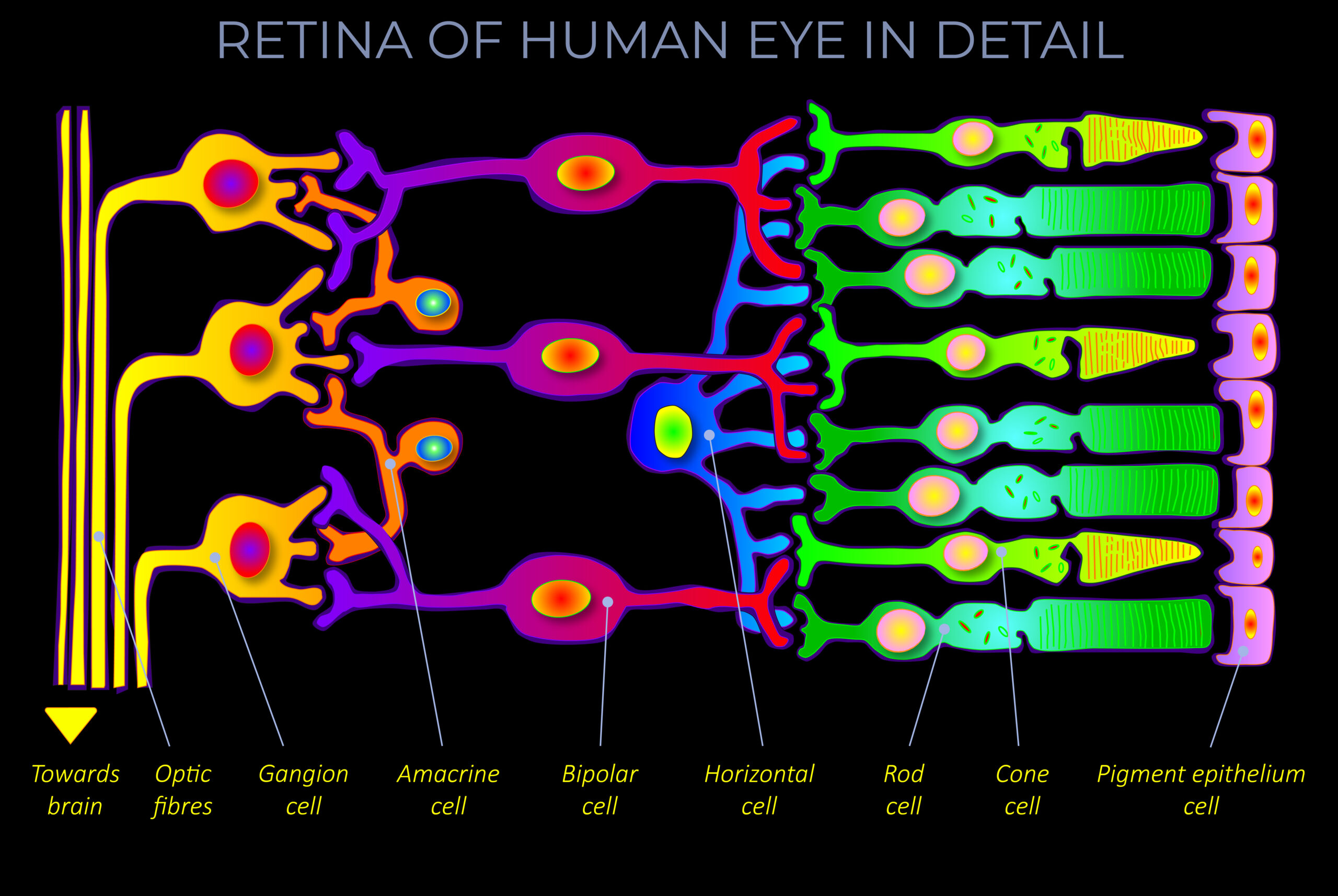Colour vision is the human ability to distinguish between objects based on the wavelengths of the light they emit, reflect or transmit. The human eye and brain together translate light into colour.
- Colour is not a property of electromagnetic radiation, but a feature of visual perception.
- The human eye, and so human perception, is tuned to the range of wavelengths of light that make up the visible spectrum and so to the corresponding spectral colours between red and violet.
- Light, however, is rarely of a single wavelength, so an observer will usually be exposed to a spread of different wavelengths of light or a mixture of wavelengths from different areas of the spectrum.
- An observer’s perception of colour is a subjective process as the eyes and brain respond together to stimuli produced when incoming light reacts with light-sensitive cells within the retina at the back of the eye.
- The perception of colour can be influenced by various factors, such as lighting conditions, surrounding colours, and individual differences in colour perception.
No posts found.
References
- Colour vision is the human ability to distinguish between objects based on the wavelengths of the light they emit, reflect or transmit. The human eye and brain together translate light into colour.
- Colour is not a property of electromagnetic radiation, but a feature of visual perception.
- The human eye, and so human perception, is tuned to the range of wavelengths of light that make up the visible spectrum and so to the corresponding spectral colours between red and violet.
- Light, however, is rarely of a single wavelength, so an observer will usually be exposed to a spread of different wavelengths of light or a mixture of wavelengths from different areas of the spectrum.
- An observer’s perception of colour is a subjective process as the eyes and brain respond together to stimuli produced when incoming light reacts with light-sensitive cells within the retina at the back of the eye.
- The perception of colour can be influenced by various factors, such as lighting conditions, surrounding colours, and individual differences in colour perception.


